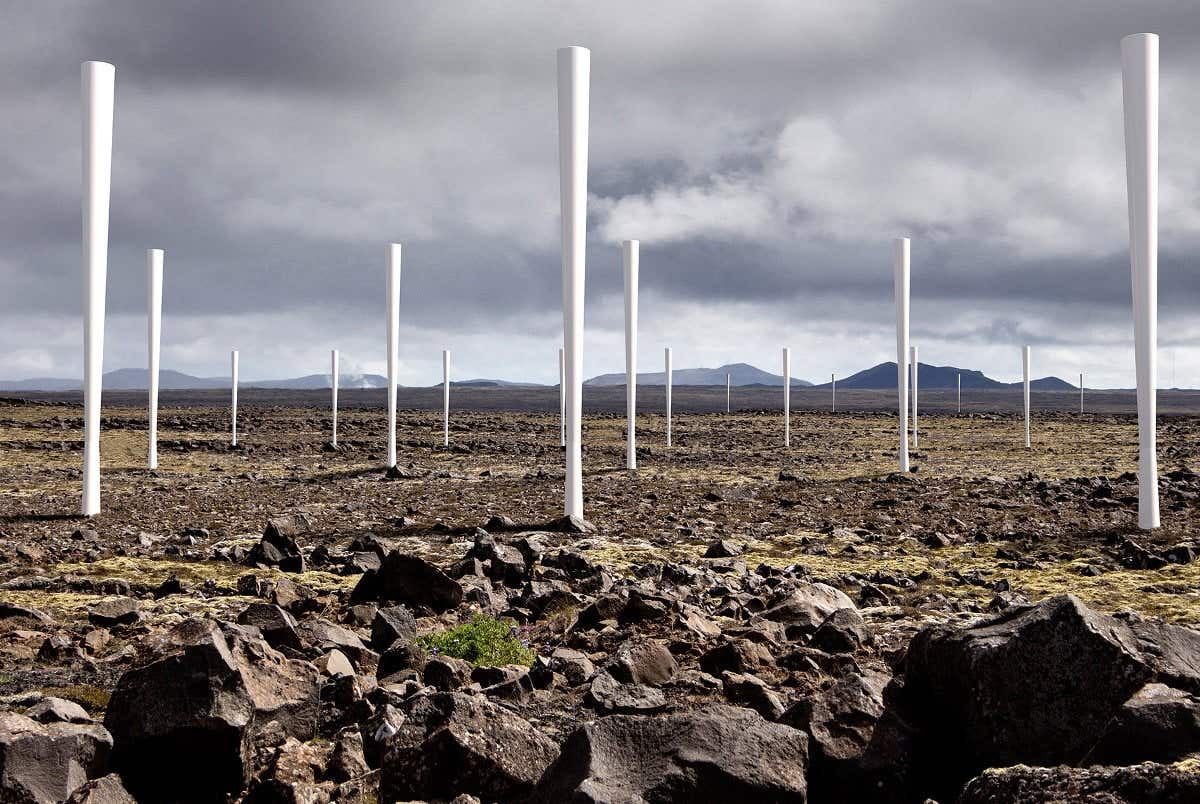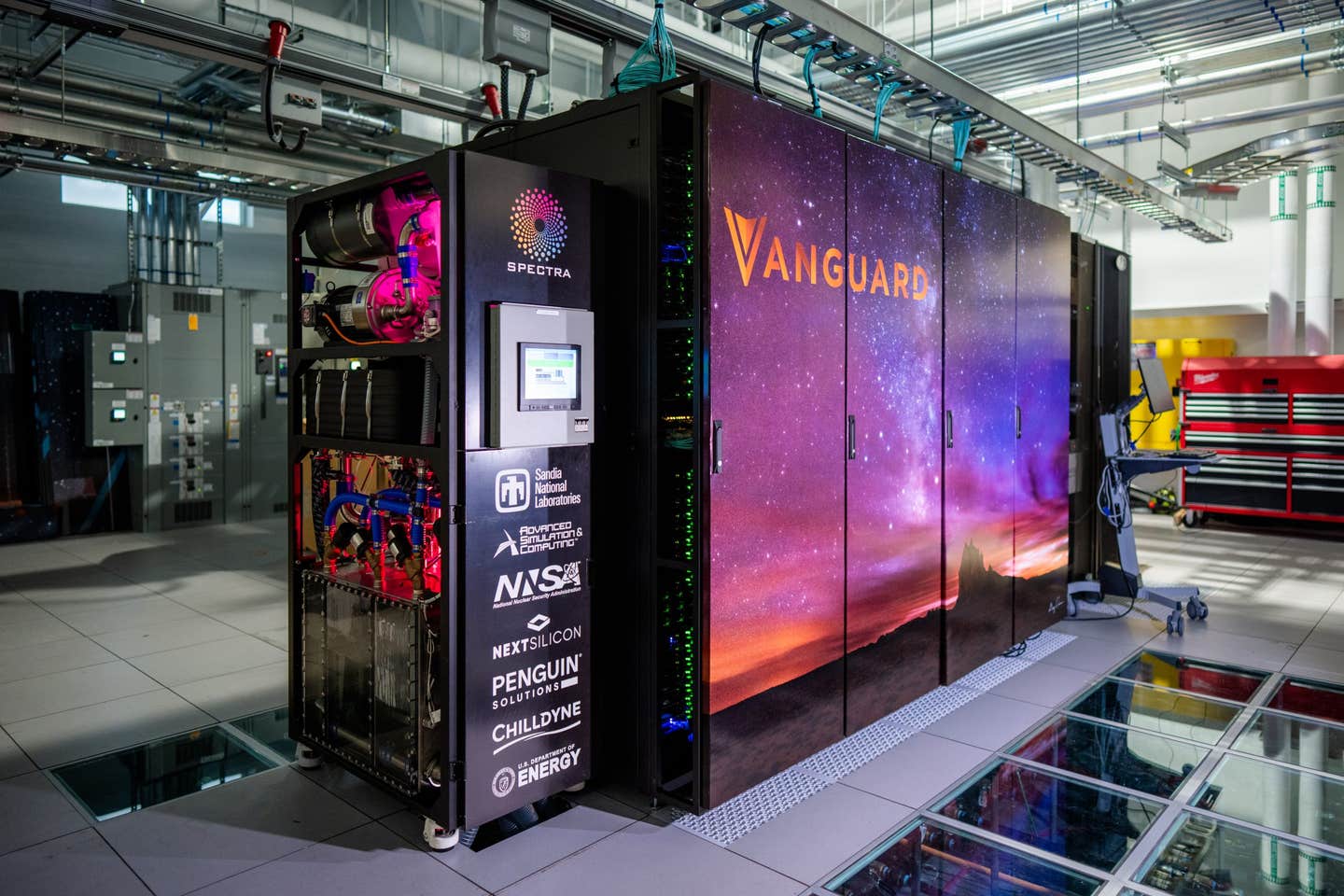New bladeless wind turbine generates clean, quiet, bird-safe power
New bladeless wind turbine uses vibration instead of blades, offering quieter, safer, and greener energy for homes and cities.

A new bladeless wind turbine, powered by oscillation, promises quieter, cleaner energy and a safer option for birds and urban spaces. (CREDIT: Vortex Bladeless)
Across the world, wind power is growing fast—but not fast enough. To meet climate goals and reach carbon neutrality, the United Nations says global wind energy must triple in the next ten years. Standard turbines, with their giant spinning blades, are helping, but they face challenges: high costs, loud operation, complex maintenance, and their unfortunate impact on birds.
Now, a fresh approach is gaining attention. A bladeless wind turbine, designed by the Spanish startup Vortex Bladeless, uses a vibrating upright cylinder to harvest wind power. Nicknamed “the Skybrator” by the internet due to its shape and motion, this invention skips the blades, oils, and gears entirely. Instead, it turns wind into power through a well-known but rarely used concept: vortex shedding.
Vortex shedding happens when wind moves past a tall, cylinder-like structure. This motion causes the structure to sway back and forth. The Vortex turbine captures that motion and turns it into electricity using an alternator at its base.
The result is a turbine that’s smaller, quieter, and less invasive than its traditional cousin. It doesn’t harm birds, needs no lubricants, and produces almost no noise. Its sleek shape and minimal parts make it suitable for homes, rooftops, and even city environments where big turbines just don’t fit.
Simpler, Safer, and Less Messy
Unlike classic windmills, this turbine has no rotating blades, shafts, or gears. The cylinder stands tall, held to a base, and sways with the wind. With fewer parts to break, it requires very little maintenance. It also doesn’t need to spin or face a certain direction to work. These traits allow it to function even with light breezes or changing wind patterns.
And it’s quiet. No hum, no buzz, no swooshing blades. That’s a big plus in crowded areas. Even better, birds fly safely around it, avoiding the deadly collisions that often happen with spinning blades. The cylinder’s gentle movement keeps wildlife out of harm’s way while still collecting wind power efficiently.
Jorge Piñero of Vortex Bladeless explains the advantage of size: “Power grows exponentially with the size of the device. A Vortex Tacoma of 2.75 meters high could be powering a fridge, many phones, and some LED lights for an off-grid house.”
Related Stories
- Harnessing Ocean Currents to Power the Future
- MIT engineers’ revolutionize the design and operation of wind farms
- Gigantic offshore wind farm could power over a million homes
This makes the bladeless design a good match for homes that already use solar panels. Solar energy works best during the day, while wind energy often picks up at night. Together, they can form a self-sufficient system.
Design That Divides Opinion
The turbine’s shape and shaking motion have drawn jokes online. Reddit threads and YouTube videos have compared it to adult toys, drawing over 94,000 ratings and thousands of comments. The nickname “Skybrator” stuck, despite the company’s focus on serious clean energy.
“Well, we engineers tend to be serious about this, but it is indeed funny and not harmful,” says Piñero. “People can joke if they want, as long as they remember that this is a scientific project with many professionals and organizations behind working very hard and with passion.”
The company remains focused on its goal: to offer an eco-friendly, urban-friendly way to harness wind. They don’t plan to replace traditional turbines, which still produce far more power. Instead, Vortex Bladeless sees their design as a helpful addition—especially where larger machines won’t work.
This includes homes, city buildings, or off-grid cabins that need a small, steady source of electricity. In these cases, the bladeless turbine offers a cleaner, simpler, and more flexible option.
Still a Work in Progress
Vortex Bladeless has spent years developing and testing this technology. The idea dates back at least to 2015, but it has taken time to refine. Critics have voiced doubts. PBS SoCal warned that the turbine might not match the real-world power of larger designs. Others worry that while the concept is smart, its energy output may fall short under varied conditions.
Still, some experts remain hopeful. Norway’s state energy company, Equinor, named Vortex one of the ten most exciting energy startups. That recognition carries weight, especially from a country known for innovation in renewable energy.
Despite the buzz, the company has stayed quiet lately. But interest continues to grow. The Future Galaxy YouTube channel reported that Vortex Bladeless is planning a crowdfunding campaign to raise funds for mass production and distribution. The company is also working on different sizes of the turbine to meet various energy needs.
If successful, the bladeless turbine could open the door to new forms of clean energy—especially in cities, homes, and off-grid communities where big turbines are not an option. Even with a funny nickname and years of development hurdles, this bold new approach has the potential to shake things up.
A Friendlier Face for Wind Energy
Standard wind turbines dominate rural landscapes with towering blades. While they work well in open fields or coastal wind farms, they can’t be placed just anywhere. Urban settings, with their tight spaces and noise concerns, need a different kind of solution.
That’s where this new design stands out. Its sleek shape, silent motion, and small size make it perfect for city use. It doesn’t need a team of workers or tons of land to install. And its clean operation—no oil, no fluids, no rotating machinery—reduces the risk of pollution or breakdowns.
With fewer moving parts, it’s also easier to make and ship. For developing regions or remote areas, this could make wind energy more accessible. Add that to its ability to work well with solar panels, and you’ve got a strong case for homes and microgrids around the world.
Still, questions remain. Can it deliver enough power to be more than a novelty? Will cities, investors, and energy companies adopt it? Those answers depend on further testing, public interest, and smart development.
But even if the bladeless turbine doesn’t replace the giant spinning towers we know today, it could become a trusted partner in the clean energy mix—quietly swaying on rooftops, helping power the future with a gentler touch.
Computer Optimization and Efficiencies
Recently, engineers from the University of Glasgow have used sophisticated computer simulations of bladeless wind turbines (BWTs) to identify for the first time how future generations of the technology could be built for maximum efficiency.
The team's paper, titled "Performance analysis and geometric optimisation of bladeless wind turbines using wake oscillator model," is published in Renewable Energy.
The findings could help the renewables industry take BWTs, which are still at an early stage of research and development, from small-scale field experiments to practical forms of power generation for national electricity grids.
Note: The article above provided above by The Brighter Side of News.
Like these kind of feel good stories? Get The Brighter Side of News' newsletter.



